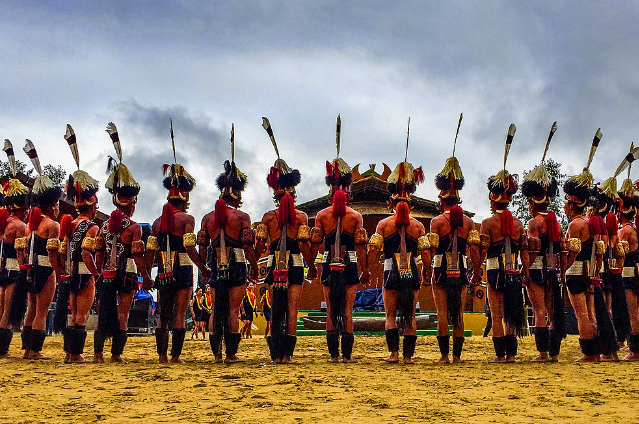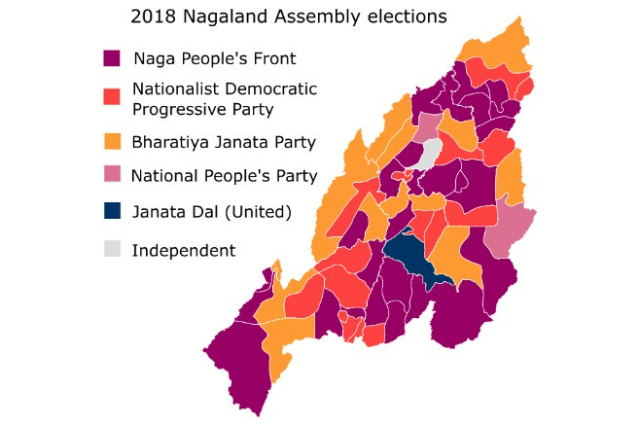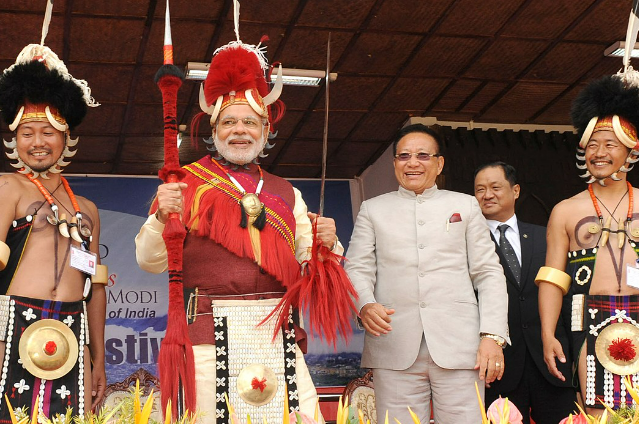Introduction
Nationality is a very divided subject and a matter of much dissent for the people of the Naga hills or rather their political representatives. Nationality, identity, politics and ethnic assertion has been an issue of constant contention in this North-Eastern state, which has often resulted in violent confrontation between Naga separatist bodies and the Indian Armed forces resulting in civilian casualties and disruption of peace in the hills.
Adding to the already strained tensions between the Union of India and what some Naga separatist groups like to call ‘Nagalim’, there has been an increasing demand for a separate Naga flag, and a discrete constitution outside the scope of the Indian Constitution, which they call the ‘Yehzabo’. They also demand for reintegration and reassimilation of the politically severed fragments of land inhabited by the Naga tribes which are now a part of Manipur and Assam, into Nagaland for the formation of united ‘Nagalim’. Their demands do not end here and the complex nature of their requisites only mount further when one takes into consideration their demand for a separate Naga country because they claim that the federal structure (quasi-federal) of the Indian constitution is insufficient for them and they would much rather share their sovereign powers with India as two separate entities than one.
The recognition of this socio-political dynamic is crucial to the understanding of what informs the politics of Nagaland, its political leaders and the common voter.
The disquiet in the Naga quarters have primarily risen from the centre’s attempt to integrate the tribes into the dominant mainstream of India and the Naga leaders’ vehement and violent protest at that.
There has also been a pervading feeling amongst the Naga tribes at large, that they were cheated out of their freedom by the Indian government and the mist of this misunderstanding hasn’t cleared since the state was first formed in the December of 1963. There is always a glimmer of hope here and there when talks between the Centre and the State seem to be moving in a positive direction (like the 1997 ceasefire agreement between the central government and the NSCN-IM and the framework agreement of 2015) but the two power structures have always manage to find some point of dissension and this has resulted in diplomatic talks being nothing more than a series of disasters.
But recent political developments in the state also suggest that the situation is not as grim as it was two decades ago, and a lot has changed. BJP even managed to win 12 out of the 60 Legislative Assembly seats in the 2018 state elections. The number is not even remotely enough to form a government, but what it does is, that it allows the party to have a stake in the government and also to have a somewhat open channel of communication with the regional political parties and the people of Nagaland. BJP’s massive success in the North-East reflects the changing political terrain of the region in general and the state of Nagaland’s changing priorities in particular. While there have been no sweeping changes insofar as the state’s political relations with the centre is concerned, things have certainly turned for the better. With the 2023 state election just round the corner, it is imperative to understand Nagaland’s complex political machinery, and its romance with history, ethnic assertion, separatism and regionalism.
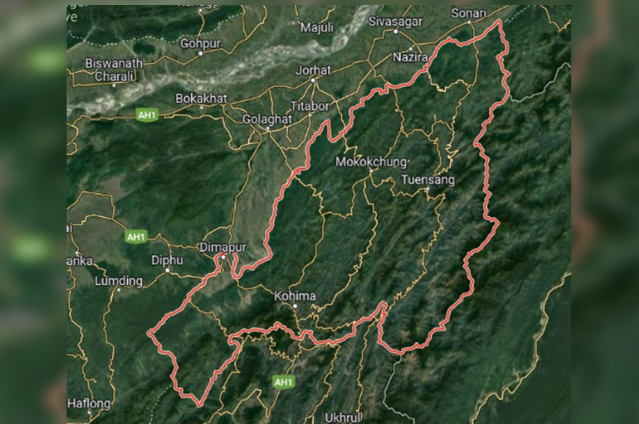
Historical problems
The Naga insurgency started with Zapu Phizo, a very prominent Naga leader who raised his banner of rebellion against the Indian Union. He formed the Naga Federal Government (1956) and raised a Naga federal Army whose ultimate aim was to carve out a sovereign Naga State from the Indian Union.
The centre sent a huge army to the North-East and The Armed Forces Special Power Act, 1958 was implemented in the Naga hills to counter the violence which the central government perceived had become a way of life in the North-Eastern states of India (Assam and Manipur).
Nagaland formally became the 16th State of India on 1st December 1963 following a long-standing negotiation with the Indian government for a separate political union. The state was carved out of the then state of Assam and accorded statehood under The State of Nagaland Act, 1963.
The thirteenth amendment also stated that the Acts of the Parliament shall not apply to Nagaland unless so decided by the Nagaland Legislature with regard to-
- Religious or social practices of the Nagas;
- Naga Customary Law and procedure;
- Administration of civil and criminal justice involving decisions according to Naga Customary Law;
- Ownership and transfer of land and its resources.
But this was not enough for the political leaders and the multiple Naga tribes of Nagaland. The rebel activity and insurgencies continued to rise in Nagaland as well as in parts of Myanmar well into the 1970’s. Cease-fires and negotiations have always been on the table but rarely to any effect because the demands of the multiple Naga groups have always been diverse in nature and the agenda and the stance of the insurgent groups have historically remained divergent.
So, it’s been a rather difficult task for the Centre in the past to navigate their task of moderate diplomacy with the Naga leaders. The political landscape had for a long time been marred with the stain of civilian casualties, death of the members of the Indian Armed forces as well as the insurgents and under the fragile guise of peace that seemed to be hanging by a thread reaching a concrete conclusion seemed like a distant dream.
This sense of pain at the continual state of unrest, the inordinate loss of life, the oppressive nature of the AFSPA, and a pervading atmosphere of fear are some elements which do play an important part as far as voting for a particular party by the common people of Nagaland goes. They are all deciding factors and do very much influence the public opinion which in turn reflects in the ballet boxes and the EVM’s.
Separatist Groups
Separatism and demand for a new nation is nothing new to India. Arms have been taken up multiple times by various ethnic and cultural groups demanding for a separate nation-state (Khalistan and Kashmir for instance) on the basis of having a unique and distinct history, religion or culture. But what makes the Nagaland situation really stand out is that it has been one of most troublesome areas for the Indian Armed Forces as far as the insurgency and the ethnic conflict issue is concerned. Also, add to the mix the fact that these insurgencies have also been one of the longest standing conflict in the history of Independent India, and we have for ourselves a situation that just won’t unspool.
There are numerous separatist groups and a lot of the times their agendas are divergent and there is an internal conflict of interest even within these different separatist groups. To begin with let us try and understand where these groups come from as far as their objectives are concerned. The political and sometimes armed strife against the Indian government and the Armed Forces is primarily being led by four insurgent groups:
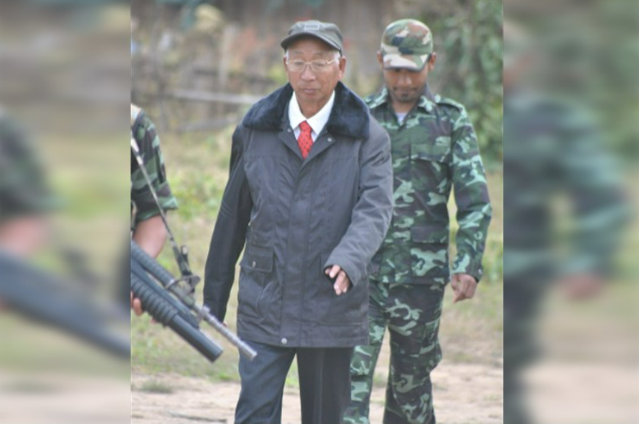
- The National Socialist Council of Nagaland (Khaplang) [NSCN/K]- SS Khaplang, a prominent Naga separatist leader is the chairman of this outfit. This particular organization is not on friendly terms with India and has been declared a terrorist organization and an unlawful association by the Government of India. The Central government is not trying to negotiate any friendly terms or framework agreements with the Khaplang faction of the NSCN.
- National Socialist Council of Nagaland (Kitovi-Neopaokonyak) [NSCN/KN)- The government again is not on very friendly terms with this particular outfit as well. This faction is not known to have a violent temperament and even the South Asia Terrorism Portal (2020) mentions them just twice and even those are for minor infraction.
- National Socialist Council of Nagaland (Reformation) [NSCN/R]- The government is on a ceasefire agreement with this faction. The ceasefire agreement was very recently extended for another year. It will remain in operation between the Central Government and three factions of the NSCN (Isak-Muivah, R-reformation, and K-Khango) till 28th April 2023.
- National Socialist Council of Nagaland (Isak-Muivah) [NSCN/IM]- This faction led by the Isak and Muivah, are on Ceasefire with the government. They signed the Framework Agreement of August 2015 with the Indian Government, the details of which were not made public. But more recent development, including the annual report of the Ministry of Home Affairs 2020 and then Mr. Muivah’s interview to The Wire (October 2020) stating his displeasure at Governor RN Ravi, hints at the fact that the cracks and blemishes in the relationship between the NSCN-IM and The Government of India have begun to resurface.
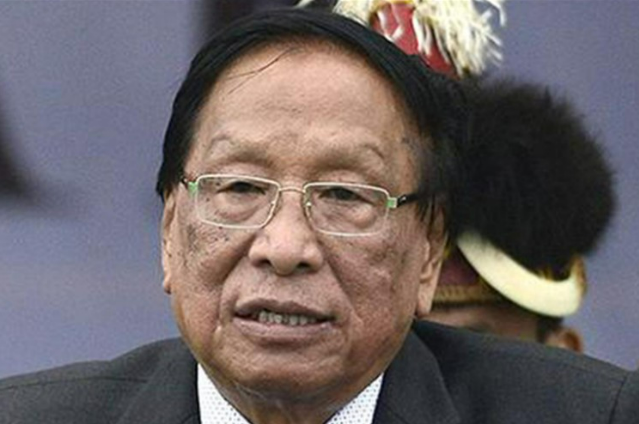
The Ministry of Home Affairs in its Annual Report (2020) stated that 44% of the insurgency and violence-related incidents in Nagaland were linked to the Isak-Muivah faction of the NSCN.
Th. Muivah in his interview to The Wire (2020) repeatedly stated that his people, the Nagas are, not lost people and that they have their history and that history’s uniqueness has been officially accepted by the Indian government as well. He says, “because our history is unique, the solution must also be unique.” And, what exactly is that unique solution? That the Nagas will co-exist with India and share sovereign powers with India but they will not merge with India. His faction insists on peaceful coexistence of Nagaland with India as two separate entities and not one.
Mr. Muivah in another instance while addressing to the public also stated that, “Till the last Naga is alive we will demand for our own constitution and our flag.”
The Framework agreement led to the formation of a Pan Naga Hoho, which is a cultural and social body, not invested with any political power, whose ultimate aim is to bring under one umbrella, the Nagas of Assam, Manipur and Arunachal Pradesh. The NSCN-IM firmly states that the formation of the Pan Naga Hoho does not subvert any democratic political institution and that PNH is still in its incubation stage and does not necessarily warrant any wild speculations.
While the NSCN-IM appreciates this move by Union government, it is still adamant on its demand for a separate constitution and flag, and only considers the PNH as a good first-step towards the achievement of the greater goal, which is the formation of Nagalim.
Who forms the government in Nagaland is in parts determined by elements and factors that shouldn’t hold any sway in a democratic election. These separatist groups play a significant role in deciding who gets to have how many votes and which political party wins in what constituency because they hold a considerable sway over the local population.
The 2018 state elections were particularly interesting because BJP managed to secure 12 out of the 60 legislative assembly seats. And its not very difficult to establish a co-relation between that and the signing of the 2015 Framework agreement. How much of an influence the agreement had on the election can be argued, but what can not be denied was that it did play an important part. Political appeasement and opening channels of communication with the separatist groups was a political master-stroke by the BJP.
Vox Populi -
The Voice of the People
Nagaland is a Christian Majority, with 88% of its population following the Christian religion. Christianity is in parts a colonial legacy from the past that lingers in the present and very much dictates the future. The conversion to Christianity was an organized ploy by the British who systematically kept the areas of the north-east segregated from mainland India stating that they were trying to protect the tribal culture, while simultaneously allowing the missionaries to venture freely in the tribal territory. Christianity has had a major influence over this region and it does influence the society, the politics and the political leanings of the people of this state. The devout Christian population of this state does not seem very happy with the firebrand Hindutva politics of the BJP. In an interview to the NDTV young students of Testo College, Dimapur said that religion will always be a motivating factor for them. They also asserted that they were not too happy with 25th of December being declared as the Good Governance Day, because Christmas happens to fall on the same day as well, and they see this declaration as an interference with their religion.
Minor problems aside, the interview also highlights the network connectivity issue that many of the students in Nagaland are facing. In this day and age of the internet and initiatives like digital India it is hard to imagine a place where connectivity would be an issue and yet it is an integral part of the everyday reality for these students.
What’s interesting to note is that the approval rating for PM Modi was surprisingly high because the students were really hopeful of PM Modi’s tenure at the helm of affairs and they found his governments International Relations policy laudable.
Literature and Cultural festivals are a fair representation of the voice of the people. Nagaland is famous for its Hornbill festival which has garnered attention for a long time and contributed to promoting tourism in Nagaland. But as far as literature is concerned, the literature of the North-East s filled with anxiety to the brink because purgation of violence and bloodshed does not happen overnight and catharsis is a welcome but distant proposition for them. The anxiety and the hopelessness are reflected in their poetry. Mamang Dai in her poem ‘The Voice of the Mountains’ writes,
“Peace is a falsity.
A moment of rest comes after a long combat…”
The insurgencies, the ethnic conflicts, the loss of culture due to modernization are some of issues that the common people experience and this needs to be talked about in the political arena as well. The collective conscience of the north-east calls for catharsis. What they need from their politicians is that they be understanding of their symbiotic relationship with nature, their culture, respect it and help them conserve it.
Conclusion
With the insurgencies on a steady rate of decline and civilian casualties down to almost zero, the chances for BJP to perform well in the 2023 elections seem promising. An incident of horse trading took place very recently where 21 of the 25 MLA’s of the NPF switched parties and joined the NDPP. This incident of horse trading only aggravates and accentuate the instability of the political dynamic in Nagaland which seems to be hanging by a thread, a thread which may snap at any moment.
But everything said and done, it would be interesting to see how the national parties fare in this hyper regional political arena. Congress in the 2018 election landed with zero seats. There could be a redemption just around the corner for them. The Aam Aadmi Party(AAP) also finished with zero seats in 2018, but if we are to take anything away from their thunderous victory in Punjab is to never write them off.
Elections are always lively and festive occasions in India. They are a celebration of our rich and complex democracy. The Nagaland political domain is riddled with complexities and it is very important that we as citizens of India keep a very close eye on the results of the 2023 state election, because they could very well be a pivotal moment and a testament to the success or failure of the inroads the central government has managed to make in the North-Eastern part of India.
. . .
References:

